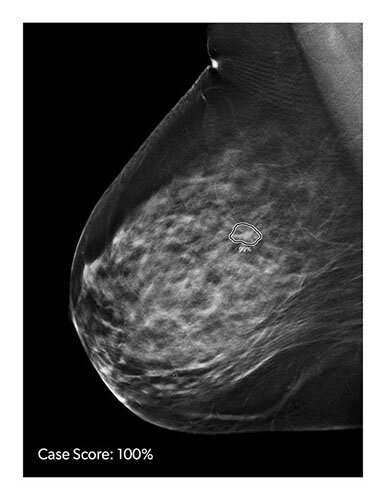Novel Ingestible Capsule X-Ray Dosimeter Enables Real-Time Radiotherapy Monitoring
|
By MedImaging International staff writers Posted on 17 Apr 2023 |

Gastric cancer ranks among the most prevalent cancers worldwide. Precision is vital in modern radiotherapy, as it aims to target tumor cells while minimizing damage to healthy tissue. However, challenges such as diverse patient populations, treatment uncertainties, and varying delivery methods result in low efficacy and inconsistent outcomes. Real-time monitoring of radiation doses, particularly within the gastrointestinal tract, could enhance radiotherapy precision and effectiveness, but it remains a difficult task. Furthermore, current methods for tracking biochemical indicators like pH and temperature fall short in providing a comprehensive evaluation of radiotherapy. Now, a new invention may improve gastric cancer treatment by boosting the precision of radiotherapy, which is often combined with surgery, chemotherapy, or immunotherapy.
Conventional clinical dosimeters, such as metal-oxide-semiconductor field-effect transistors, thermoluminescence sensors, and optically stimulated films, are typically placed on or near a patient's skin to estimate the radiation dose absorbed in the targeted area. While electronic portal imaging devices have been investigated for treatment verification, these devices can be costly and absorb radiation, thereby reducing the patient's intended radiation dose. Ingestible sensors have been limited to monitoring pH and pressure, creating the need for an affordable swallowable sensor that can simultaneously track biochemical indicators and X-ray dose absorption during gastrointestinal radiotherapy. A research team at the National University of Singapore (NUS, Singapore) has created an ingestible X-ray dosimeter capable of real-time radiation dose detection. By integrating their innovative capsule design with a neural-network-based regression model that calculates radiation dose based on data captured by the capsule, the researchers achieved approximately five times more accurate dose monitoring compared to existing standard methods.
The novel ingestible X-ray dosimeter can measure radiation dose, pH changes, and temperature in real time during gastrointestinal radiotherapy. The capsule's main components consist of a flexible optical fiber wrapped in nanoscintillators that emit light in response to radiation, a pH-sensitive film, a fluidic module with multiple inlets for dynamic gastric fluid sampling, dual sensors for dose and pH measurement, a microcontroller circuit board that processes photoelectric signals for transmission to a mobile app, and a compact silver oxide battery to power the capsule.
Upon ingestion and reaching the gastrointestinal tract, the nanoscintillators emit a stronger luminescence when exposed to increased X-ray radiation. A sensor within the capsule measures this glow to determine the radiation dose delivered to the targeted area. Simultaneously, the fluidic module collects gastric fluid for pH detection by the color-changing film. This color shift is recorded by a second sensor inside the capsule. Additionally, both sensors can detect temperature, providing insight into potential adverse reactions to radiotherapy treatment, such as allergic responses.
The microcontroller circuit board processes photoelectric signals from the two sensors and transmits the information to a mobile app using Bluetooth technology and an antenna. The mobile app employs a neural network-based regression model to process the raw data, displaying information such as radiotherapy dose, temperature, and pH of the tissues undergoing treatment. The capsule dosimeter measures 18mm in length and 7mm in width, a standard size for supplements and medications, and has a production cost of S$50.
While currently designed for monitoring radiotherapy doses in gastric cancer, the capsule could also be adapted to track treatment for various malignancies with modifications to its size. For instance, a smaller capsule could be inserted into the rectum for prostate cancer brachytherapy or the upper nasal cavity for real-time measurement of absorbed doses in nasopharyngeal or brain tumors, minimizing radiation damage to adjacent structures. The research team is striving to advance their innovation toward clinical application. Future research includes determining the capsule's location and orientation after ingestion, devising a reliable positioning system to secure the capsule at the target site, and refining the accuracy of the ingestible dosimeters for safe and effective clinical use.
“Our novel capsule is a game-changer in providing affordable and effective monitoring of the effectiveness of radiotherapy treatment. It has the potential to provide quality assurance that the right dose of radiation will reach patients,” said Professor Liu Xiaogang from the Department of Chemistry under the NUS Faculty of Science, who led the research team.
Related Links:
NUS
Latest Nuclear Medicine News
- New SPECT/CT Technique Could Change Imaging Practices and Increase Patient Access
- New Radiotheranostic System Detects and Treats Ovarian Cancer Noninvasively
- AI System Automatically and Reliably Detects Cardiac Amyloidosis Using Scintigraphy Imaging
- Early 30-Minute Dynamic FDG-PET Acquisition Could Halve Lung Scan Times
- New Method for Triggering and Imaging Seizures to Help Guide Epilepsy Surgery
- Radioguided Surgery Accurately Detects and Removes Metastatic Lymph Nodes in Prostate Cancer Patients
- New PET Tracer Detects Inflammatory Arthritis Before Symptoms Appear
- Novel PET Tracer Enhances Lesion Detection in Medullary Thyroid Cancer
- Targeted Therapy Delivers Radiation Directly To Cells in Hard-To-Treat Cancers
- New PET Tracer Noninvasively Identifies Cancer Gene Mutation for More Precise Diagnosis
- Algorithm Predicts Prostate Cancer Recurrence in Patients Treated by Radiation Therapy
- Novel PET Imaging Tracer Noninvasively Identifies Cancer Gene Mutation for More Precise Diagnosis
- Ultrafast Laser Technology to Improve Cancer Treatment
- Low-Dose Radiation Therapy Demonstrates Potential for Treatment of Heart Failure
- New PET Radiotracer Aids Early, Noninvasive Detection of Inflammatory Bowel Disease
- Combining Amino Acid PET and MRI Imaging to Help Treat Aggressive Brain Tumors
Channels
Radiography
view channel
Novel Breast Imaging System Proves As Effective As Mammography
Breast cancer remains the most frequently diagnosed cancer among women. It is projected that one in eight women will be diagnosed with breast cancer during her lifetime, and one in 42 women who turn 50... Read more
AI Assistance Improves Breast-Cancer Screening by Reducing False Positives
Radiologists typically detect one case of cancer for every 200 mammograms reviewed. However, these evaluations often result in false positives, leading to unnecessary patient recalls for additional testing,... Read moreMRI
view channel
PET/MRI Improves Diagnostic Accuracy for Prostate Cancer Patients
The Prostate Imaging Reporting and Data System (PI-RADS) is a five-point scale to assess potential prostate cancer in MR images. PI-RADS category 3 which offers an unclear suggestion of clinically significant... Read more
Next Generation MR-Guided Focused Ultrasound Ushers In Future of Incisionless Neurosurgery
Essential tremor, often called familial, idiopathic, or benign tremor, leads to uncontrollable shaking that significantly affects a person’s life. When traditional medications do not alleviate symptoms,... Read more
Two-Part MRI Scan Detects Prostate Cancer More Quickly without Compromising Diagnostic Quality
Prostate cancer ranks as the most prevalent cancer among men. Over the last decade, the introduction of MRI scans has significantly transformed the diagnosis process, marking the most substantial advancement... Read moreUltrasound
view channel
Deep Learning Advances Super-Resolution Ultrasound Imaging
Ultrasound localization microscopy (ULM) is an advanced imaging technique that offers high-resolution visualization of microvascular structures. It employs microbubbles, FDA-approved contrast agents, injected... Read more
Novel Ultrasound-Launched Targeted Nanoparticle Eliminates Biofilm and Bacterial Infection
Biofilms, formed by bacteria aggregating into dense communities for protection against harsh environmental conditions, are a significant contributor to various infectious diseases. Biofilms frequently... Read moreGeneral/Advanced Imaging
view channel
New AI Method Captures Uncertainty in Medical Images
In the field of biomedicine, segmentation is the process of annotating pixels from an important structure in medical images, such as organs or cells. Artificial Intelligence (AI) models are utilized to... Read more.jpg)
CT Coronary Angiography Reduces Need for Invasive Tests to Diagnose Coronary Artery Disease
Coronary artery disease (CAD), one of the leading causes of death worldwide, involves the narrowing of coronary arteries due to atherosclerosis, resulting in insufficient blood flow to the heart muscle.... Read more
Novel Blood Test Could Reduce Need for PET Imaging of Patients with Alzheimer’s
Alzheimer's disease (AD), a condition marked by cognitive decline and the presence of beta-amyloid (Aβ) plaques and neurofibrillary tangles in the brain, poses diagnostic challenges. Amyloid positron emission... Read more.jpg)
CT-Based Deep Learning Algorithm Accurately Differentiates Benign From Malignant Vertebral Fractures
The rise in the aging population is expected to result in a corresponding increase in the prevalence of vertebral fractures which can cause back pain or neurologic compromise, leading to impaired function... Read moreImaging IT
view channel
New Google Cloud Medical Imaging Suite Makes Imaging Healthcare Data More Accessible
Medical imaging is a critical tool used to diagnose patients, and there are billions of medical images scanned globally each year. Imaging data accounts for about 90% of all healthcare data1 and, until... Read more
Global AI in Medical Diagnostics Market to Be Driven by Demand for Image Recognition in Radiology
The global artificial intelligence (AI) in medical diagnostics market is expanding with early disease detection being one of its key applications and image recognition becoming a compelling consumer proposition... Read moreIndustry News
view channel
Bayer and Google Partner on New AI Product for Radiologists
Medical imaging data comprises around 90% of all healthcare data, and it is a highly complex and rich clinical data modality and serves as a vital tool for diagnosing patients. Each year, billions of medical... Read more





















